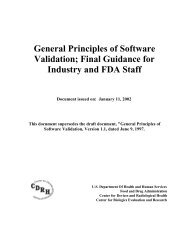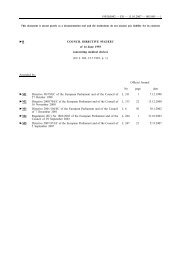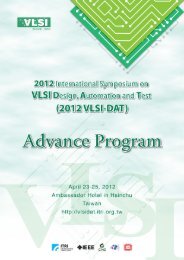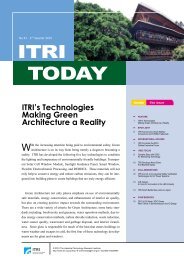Design Control Guidance - Food and Drug Administration
Design Control Guidance - Food and Drug Administration
Design Control Guidance - Food and Drug Administration
Create successful ePaper yourself
Turn your PDF publications into a flip-book with our unique Google optimized e-Paper software.
design <strong>and</strong> development team, <strong>and</strong> providing a basis for measuring conformance to qualitysystem objectives.<strong>Design</strong> activities should be specified at the level of detail necessary for carrying out thedesign process. The extent of design <strong>and</strong> development planning is dependent on the sizeof the developing organization <strong>and</strong> the size <strong>and</strong> complexity of the product to bedeveloped. Some manufacturers may have documented policies <strong>and</strong> procedures whichapply to all design <strong>and</strong> development activities. For each specific development program,such manufacturers may also prepare a plan which spells out the project-dependentelements in detail, <strong>and</strong> incorporates the general policies <strong>and</strong> procedures by reference.Other manufacturers may develop a comprehensive design <strong>and</strong> development plan which isspecifically tailored to each individual project.In summary, the form <strong>and</strong> organization of the planning documents are less important thantheir content. The following paragraphs discuss the key elements of design <strong>and</strong>development planning.ORGANIZATIONAL RESPONSIBILITIES. The management responsibility section ofthe quality system requirements 1 requires management to establish a quality policy <strong>and</strong>implement an organizational structure to ensure quality. These are typically documented ina quality manual or similarly named document. In some cases, however, the design <strong>and</strong>development plan, rather than the quality manual, is the best vehicle for describingorganizational responsibilities relative to design <strong>and</strong> development activities. Theimportance of defining responsibilities with clarity <strong>and</strong> without ambiguity should berecognized. When input to the design is from a variety of sources, their interrelationships<strong>and</strong> interfaces (as well as the pertinent responsibilities <strong>and</strong> authorities) should be defined,documented, coordinated, <strong>and</strong> controlled. This might be the case, for example, if amultidisciplinary product development team is assembled for a specific project, or if theteam includes suppliers, contract manufacturers, users, outside consultants, or independentauditors.TASK BREAKDOWN. The plan establishes, to the extent possible:• The major tasks required to develop the product• The time involved for each major task• The resources <strong>and</strong> personnel required• The allocation of responsibilities for completing each major task• The prerequisite information necessary to start each major task <strong>and</strong> theinterrelationship between tasks• The form of each task output or deliverable• Constraints, such as applicable codes, st<strong>and</strong>ards, <strong>and</strong> regulations1 § 820.20 of the FDA Quality System Regulation; section 4.1 of ISO 9001 <strong>and</strong> ISO/DIS 13485.Section B <strong>Design</strong> <strong>and</strong> Development Planning 3/11/97 Page 10
















